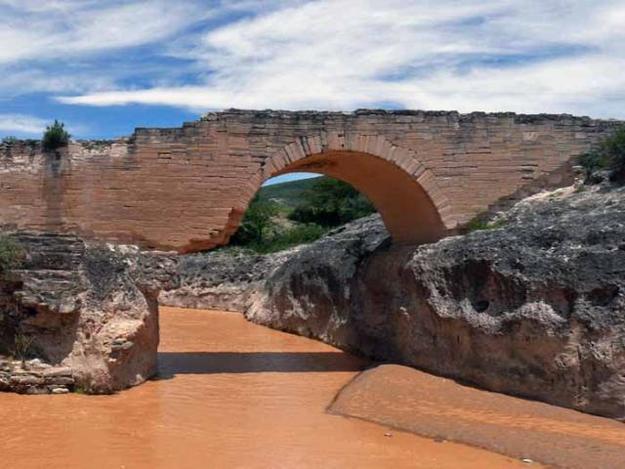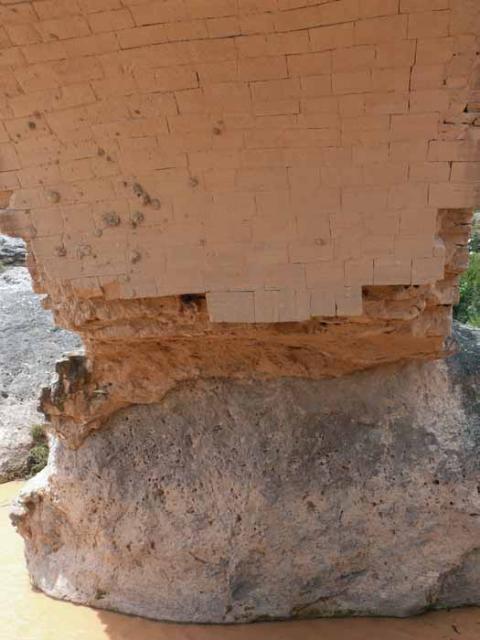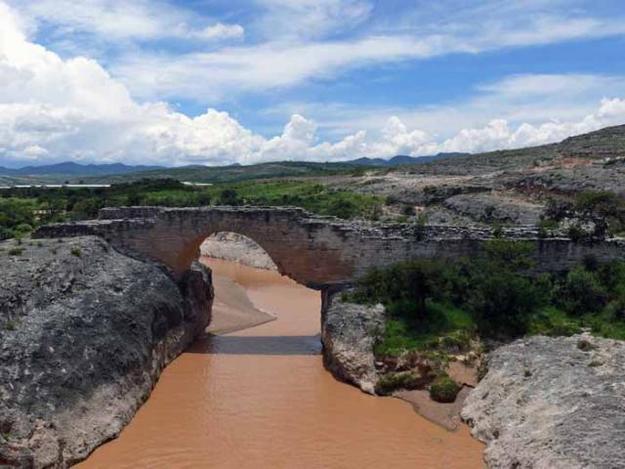Colonial Bridge of Tequixtepec
2012 World Monuments Watch
In a remote, arid, and mountainous area of Oaxaca in southern Mexico, the 450-year-old Colonial Bridge of Tequixtepec stands testament to a once flourishing economic and cultural hub. Inscriptions place the bridge’s construction in the mid to late sixteenth century, when it connected two major political centers, Coixtlahuaca and Tequixtepec. Obsidian, quetzal feathers, cacao, textiles, and ceramics were among the materials that made their way across the bridge and along the trade route between the two cities. Constructed of tuff, a type of volcanic rock, and other stones indigenous to the area, the bridge forms a graceful arch that is now in danger of collapse. Today, the Colonial Bridge of Tequixtepec stands as one of few reminders of the Ruta Dominicana, a route connecting Dominican convents in the once-prosperous region of Oaxaca. Emigration from the region has reduced the population of Tequixtepec from roughly 30,000 inhabitants in the sixteenth century to just 914 in 2005, a reduction that has limited the economic resources available to conserve the bridge. The Coixtlahuaca Basin, in which the Tequixtepec Bridge is located, is subject to flash floods, causing structural deterioration threatening the bridge’s survival.
Since the Watch
Following the announcement of the 2012 Watch, CONACULTA, the National Council of Culture and Arts in Mexico, approved the use of federal funds for conservation at the Colonial Bridge of Tequixtepec. The first phase of conservation focused on necessary repairs to prevent the further deterioration of the structure. Local workers used traditional masonry techniques to repair the paved surface, which had served to protect the underlying structure and to channel rainwater off the bridge, and the inner surface of the arch. February 2012



